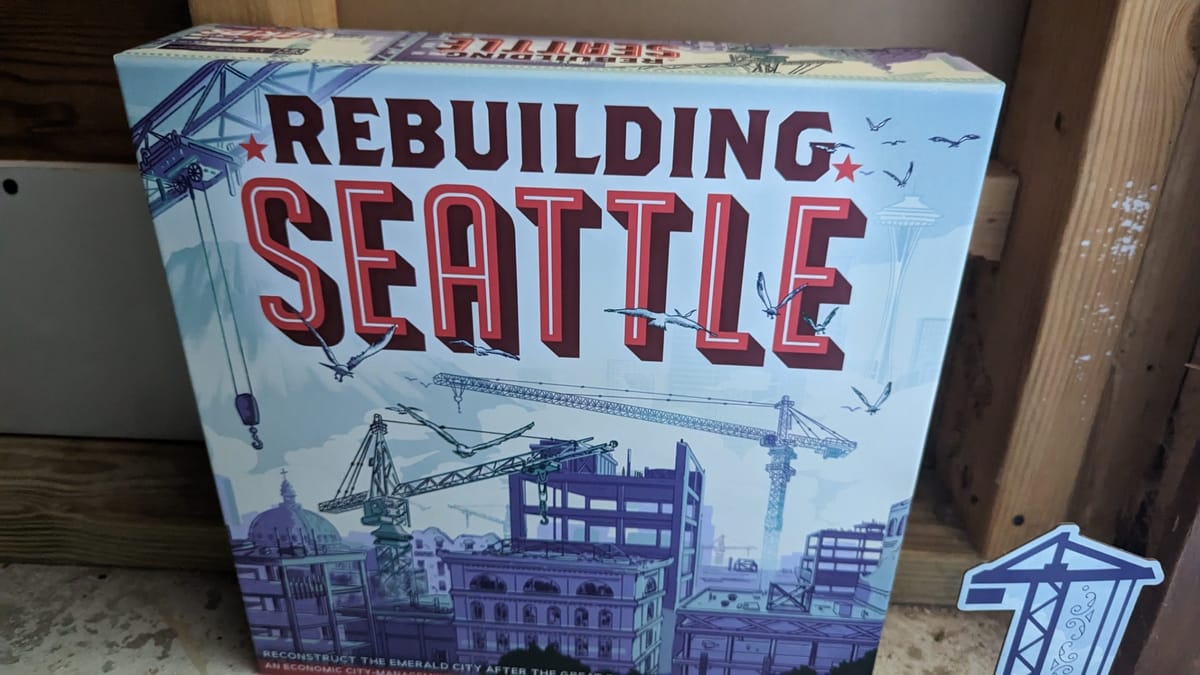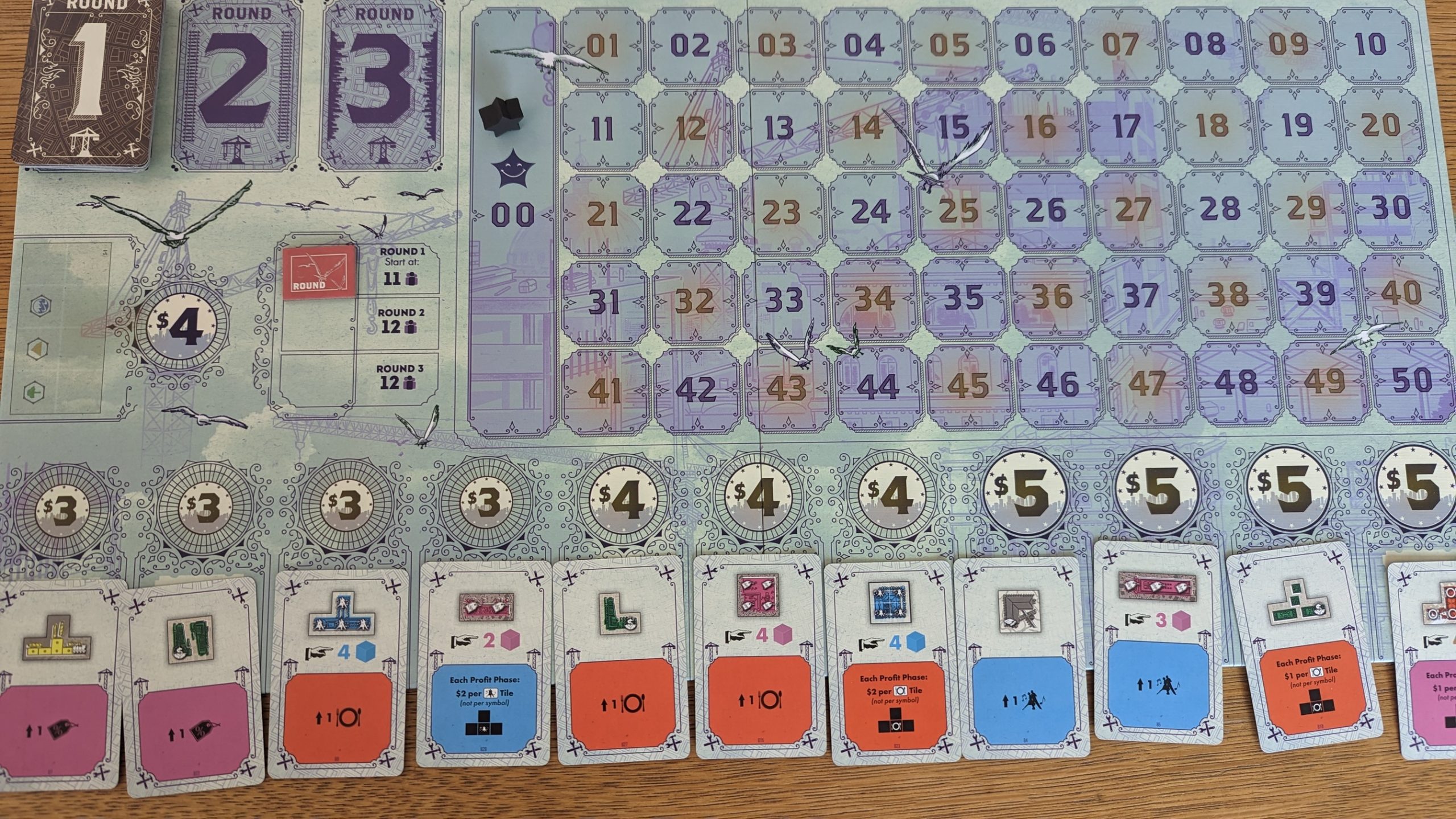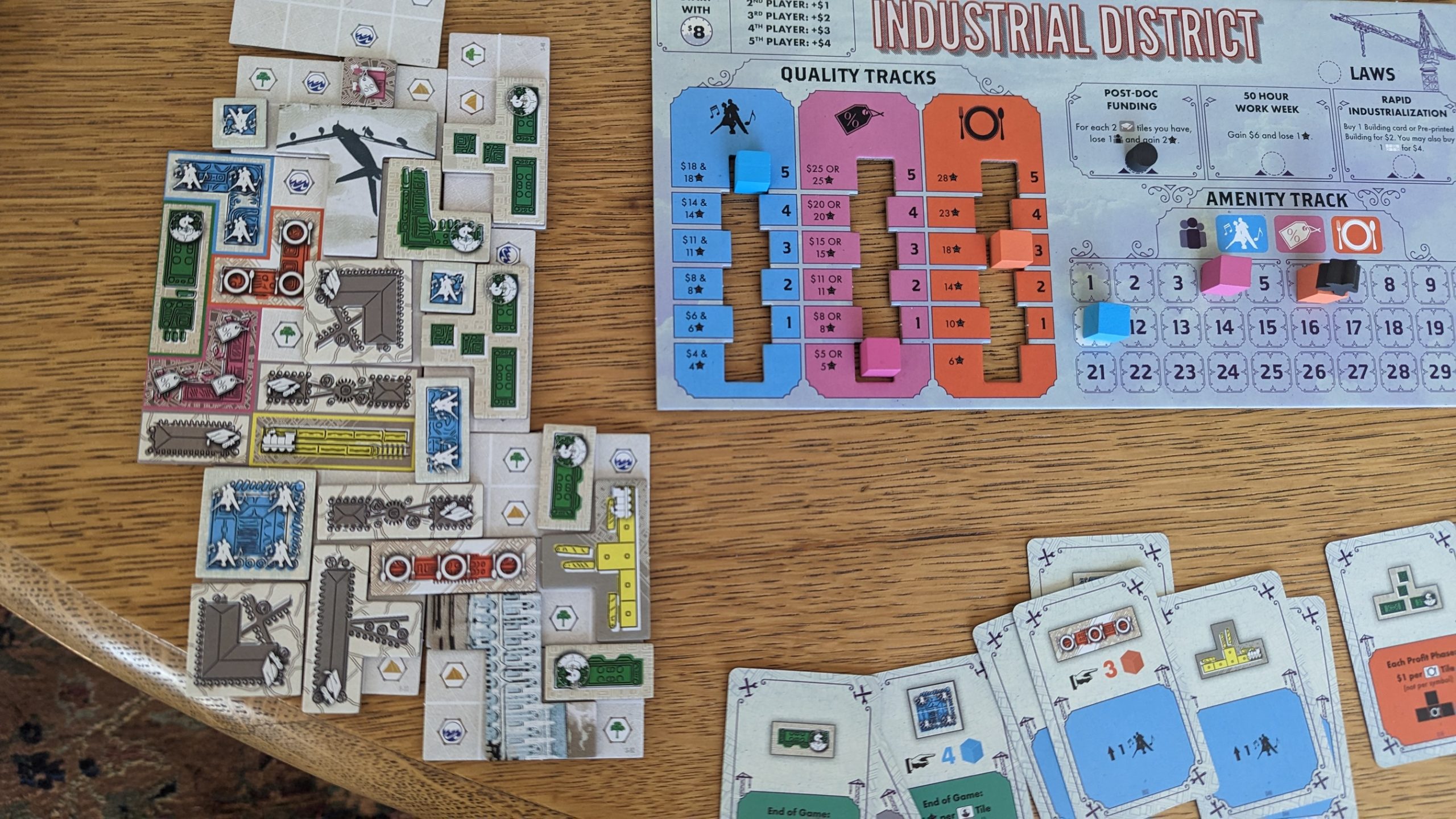
What makes a board game great? You’d think that as a game reviewer, I’d have a clever, and concise answer to that question. The truth is however, that answer changes from person to person. For people whose collections span multiple sets of shelves, Brass is an excellent game. However, for those that don’t like to get more complicated than Catan, Brass is literally unplayable. Yeah, I know that “quality is subjective” is one of the oldest cop-outs in the book, but it’s true more often than not. Then sometimes I get something like Rebuilding Seattle, which is equally beloved by board gaming enthusiasts and those that merely dabble, and I know I have a possible masterpiece in my hands.
Deceptive simplicity is the phrase of the day here, and it starts with the rules. On their turn, players must take one of three actions. The most straightforward is enacting a law- once per round, players can resolve one of the three laws on their asymmetric player board. Purchasing will be the most common, which allows players to buy a card to add the building tile to their neighborhood and receive the card’s benefit, and/or pay $4 to add a suburb expansion tile to their neighborhood. All of this probably sounds like polyomino multiplayer solitaire to you, and it largely would be if not for the stroke of genius that is resolving events, the third action. The action cards all have a benefit for the player that triggers them along with an opportunity for everyone at the table. All but one are tied to a specific building- graduation lets you reduce your population for each of your schools, and expansion nets you a free suburb for each of your train stations. Each of the three amenities, entertainment, retail, and dining, has everyone score the corresponding quality track, minus the difference between your population and the number of that amenity’s icons you have in your neighborhood. The last event, nature’s impact, gives players a bonus for every nature icon in their neighborhood they haven’t built over depending upon the round. For example, in round 2, every lake will reduce your population by one, but then you don’t have to care about lakes for the rest of the game. Once the final event is triggered, the round is over, and the card markets are reset, making the end of every round just a smidge tense as you try to decide if you can afford to activate an event yourself, as it makes it all the more likely play won’t get back to you to buy that tasty card you’ve been eyeing. On top of that, depending on how everyone’s game is going, they’ll all want to personally activate certain events, or have other players activate them for them, all in a specific order. So yes, Rebuilding Seattle is very much a head-down low-interaction euro, except for when you care about the event cards, which is all the time.

Now I’m going to throw on the handbrake and steer this review back to card purchases, specifically landmarks, a special building card that I left out until now. At the beginning of the game, each player is dealt three landmark cards and chooses two to keep. Landmarks are expensive but they provide powerful bonuses that will nudge you into focusing on one or two of the game’s mechanics. They aren’t so broken as to dictate your decisions, but they do effectively give players with a bit of a grasp on how best to navigate this game. Some vague directions. All this adds up to a game where play whips around the table with just the perfect amount of downtime between turns that once play gets back to you you know what you want to do.

For all my praise, Rebuilding Seattle is by no means a perfect game. In fact, after just about every session I’ve played it, at least one of the players walked away with a critique. But the way I see it, everything that’s been brought up is either a minor nitpick, actually a boon in some circumstances, or both. The main board is definitely oversized, with the majority of its space dedicated to a score track that goes from 1 to 50 with no way to indicate lapping other than putting a money token under your scoring token in a game where final scores usually range within 30 points plus or minus of 100. Between that and the extra markets you add for 3 to 5 players, the game can get a bit of a table hog, and there were some arguably less than optimal graphic design choices made. On the other hand, between most scoring occurring at the end of the game and being forced into your own little corner, the game successfully obfuscates how well players are doing in relation to each other. Considering the huge chunks of points they represent, the imbalance between different landmarks does sometimes wind up being the deciding factor in who wins a game. But I’m honestly not too bothered by balance, I’m much more interested in the experience a game provides, and I still haven’t heard the end of my mom wiping the floor with me after both of her landmarks. Single-handedly scored more than both of mine combined. Who am I to say something that brings that much joy is a flaw?
Rebuilding Seattle
Phenominal
Rebuilding Seattle isn't my favorite economic game, nor is it my favorite polyomino game. What it is is the only game in my collection that I can drop in front of any group of two to five people and be reasonably confident they'll have a great time.
Pros
- Quick play
- Multiple viable strategies
Cons
- That score track
- Questionable balance, especially between landmarks
